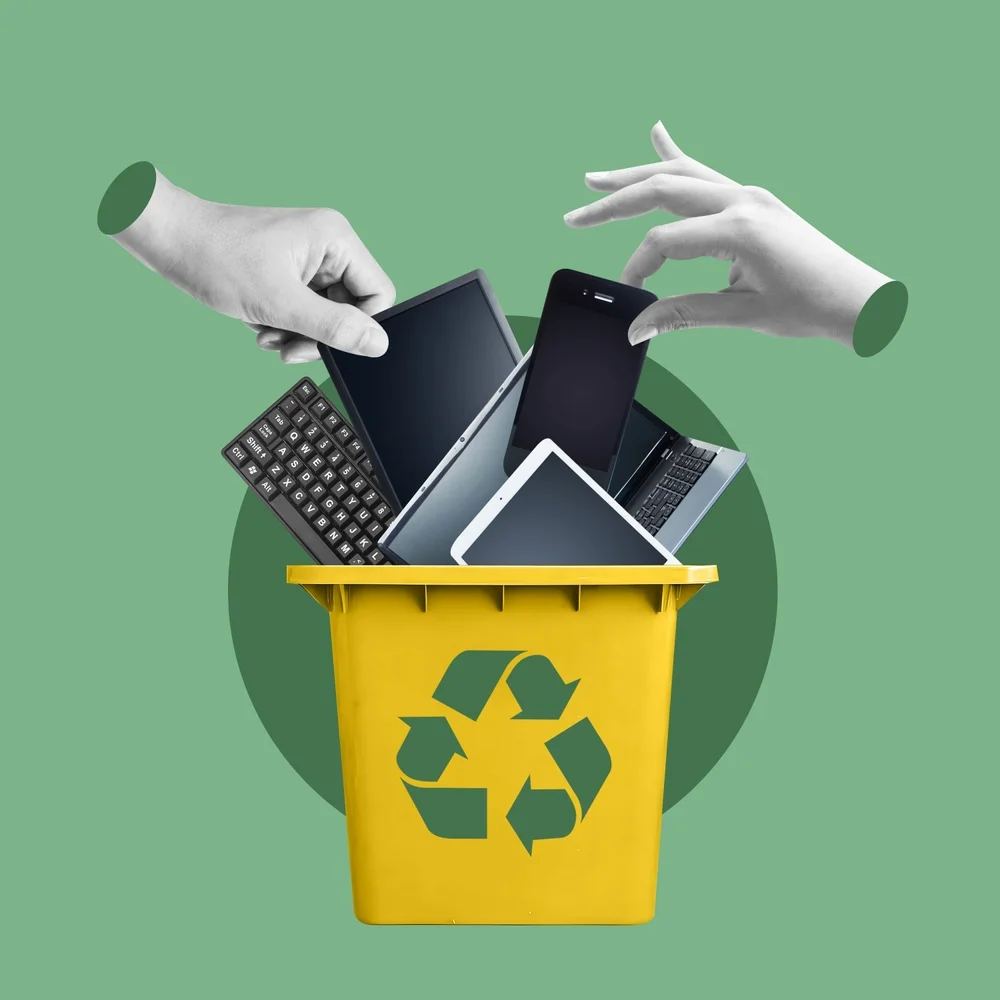Introduction to WEEE
Definition of WEEE
Waste Electrical and Electronic Equipment (WEEE) refers to discarded electrical or electronic devices. This includes everything from old household appliances and IT equipment to medical devices and lighting equipment. WEEE waste is a growing global issue, with millions of tons generated every year.
Importance of Recycling WEEE
Recycling WEEE is crucial for reducing environmental pollution, recovering valuable materials, and minimizing health risks caused by hazardous substances in e-waste. With proper electronic waste recycling, we can reduce landfill waste and support a circular economy.
Categories of WEEE Waste Electrical and Electronic Equipment
WEEE can be classified into ten main categories:
- Large household appliances: refrigerators, washing machines, air conditioners.
- Small Household Appliances: Toasters, vacuum cleaners, hairdryers.
- IT and Telecommunications Equipment: Laptops, computers, hard drives, servers.
- Consumer Equipment: Televisions, radios, audio equipment.
- Lighting Equipment: fluorescent tubes, LED lights.
- Electrical and Electronic Tools: Power drills, saws, lawnmowers.
- Toys, Leisure, and Sports Equipment: Electronic toys, video game consoles.
- Medical Devices: MRI machines, dialysis machines.
- Monitoring and Control Instruments: thermostats, smoke detectors.
- Automatic Dispensers: vending machines, ATMs.
Each category requires specific disposal and recycling methods to ensure compliance with WEEE recycling regulations.
Environmental Impact of WEEE
Hazardous Substances in WEEE
E-waste contains toxic materials like lead, mercury, cadmium, and brominated flame retardants. If not handled correctly, these substances can leach into the environment.
Effects on Soil, Water, and Air Quality
Improper electronic waste disposal leads to soil contamination, water pollution, and air pollution. Burning WEEE releases dioxins and furans, which are hazardous to health.
Health Implications for Humans and Wildlife
Exposure to e-waste toxins can cause respiratory issues, kidney damage, and neurological disorders in humans. Wildlife also suffers from habitat destruction and poisoning due to improper e-waste disposal.
Global Statistics on E-Waste Generation
- The world generates over 50 million metric tons of e-waste annually.
- Asia contributes the largest share, followed by Europe and the Americas.
- Less than 20% of global e-waste is properly recycled, highlighting the need for better WEEE collection and management.
Legislation Governing WEEE Recycling
Overview of the WEEE Directive
The WEEE Directive, introduced by the European Union, sets guidelines for electronic waste recycling, making manufacturers responsible for the disposal of their products.
National Regulations and Compliance Requirements
Different countries have unique WEEE compliance laws. Businesses must adhere to local electronic waste recycling guidelines to avoid penalties.
Responsibilities of Manufacturers and Consumers
Manufacturers must offer take-back schemes, while consumers should dispose of electronics through e-waste recycling programs.
Collection and Transportation of WEEE
Methods of Collection
- Drop-off points at recycling centers.
- Retailer take-back schemes.
- Government-run WEEE collection drives.
Safe Transportation Practices
E-waste should be securely packaged and labeled to prevent leakage of hazardous substances during transport.
Role of Local Authorities and Private Companies
Local governments and electronic waste recycling companies play a key role in managing WEEE disposal and transportation.
WEEE Recycling Processes
Sorting and Dismantling
Recyclers first sort and manually dismantle WEEE to separate hazardous and valuable materials.
Treatment of Hazardous Components
Toxic elements like mercury and lead are treated separately to prevent environmental harm.
Recovery of Valuable Materials
Recovered metals like gold, silver, and copper can be reused in new electronics, reducing the need for mining.
Challenges in WEEE Recycling
- Informal recycling sectors expose workers to hazardous substances.
- Technological limitations make it difficult to recycle complex materials.
- Economic factors impact profitability as e-waste recycling can be costly.
Innovations in WEEE Recycling Technologies
- AI-powered sorting enhances material recovery efficiency.
- Eco-friendly chemical treatments safely extract valuable metals.
- Eco-design encourages the production of easily recyclable electronics.
Role of Manufacturers in Reducing E-Waste
Designing for Durability and Recyclability
Manufacturers should produce longer-lasting and modular devices to reduce e-waste.
Take-Back Schemes and Extended Producer Responsibility
Brands should implement laptop recycling and computer recycling programs to ensure safe disposal.
Consumer Responsibilities and Awareness
Proper Disposal Methods
Consumers should dispose of WEEE only at certified e-waste recycling facilities.
Participation in Recycling Programs
Utilizing electronic waste recycling services helps reduce landfill waste.
Reducing E-Waste Through Conscious Consumption
Buying repairable and upgradeable devices reduces e-waste generation.
Economic Benefits of WEEE Recycling
- Job Creation: Recycling industries employ thousands of workers.
- Revenue Generation: recovered materials create additional revenue streams.
- Cost savings: reducing raw material extraction lowers manufacturing costs.
Case Studies of Successful WEEE Recycling Programs
Examples from Leading Countries
- Sweden recycles over 50% of its e waste.
- Japan has strict e-waste regulations, ensuring high recovery rates.
Key Success Factors
- Strong WEEE recycling regulations.
- Public awareness campaigns.
Future Trends in WEEE Management
- Circular economy models promote sustainability.
- Advanced robotics for efficient sorting and recycling.
- Stronger government policies encourage responsible e-waste management.
Conclusion
Proper WEEE recycling is vital for environmental protection and resource conservation. By following electronic waste recycling guidelines, consumers and businesses can contribute to a cleaner, more sustainable planet.
Frequently Asked Questions
1. What is WEEE Waste Electrical and Electronic Equipment recycling?
WEEE recycling is the process of safely disposing of and recovering materials from electronic waste.
2. Why is electronic waste recycling important?
It prevents environmental pollution, conserves resources, and reduces landfill waste.
3. Where can I find electronic recycling near me?
Check government websites or search for WEEE collection centers nearby.
4. What happens to hard drives during recycling?
They undergo hard drive shredding to protect data before material recovery.
5. Are there any WEEE Waste Electrical and Electronic Equipment recycling best practices?
Yes! Proper sorting, responsible disposal, and compliance with WEEE recycling regulations are essential.
6. What is the WEEE Directive?
It is an EU law that holds manufacturers accountable for the end-of-life disposal of electronic products.



